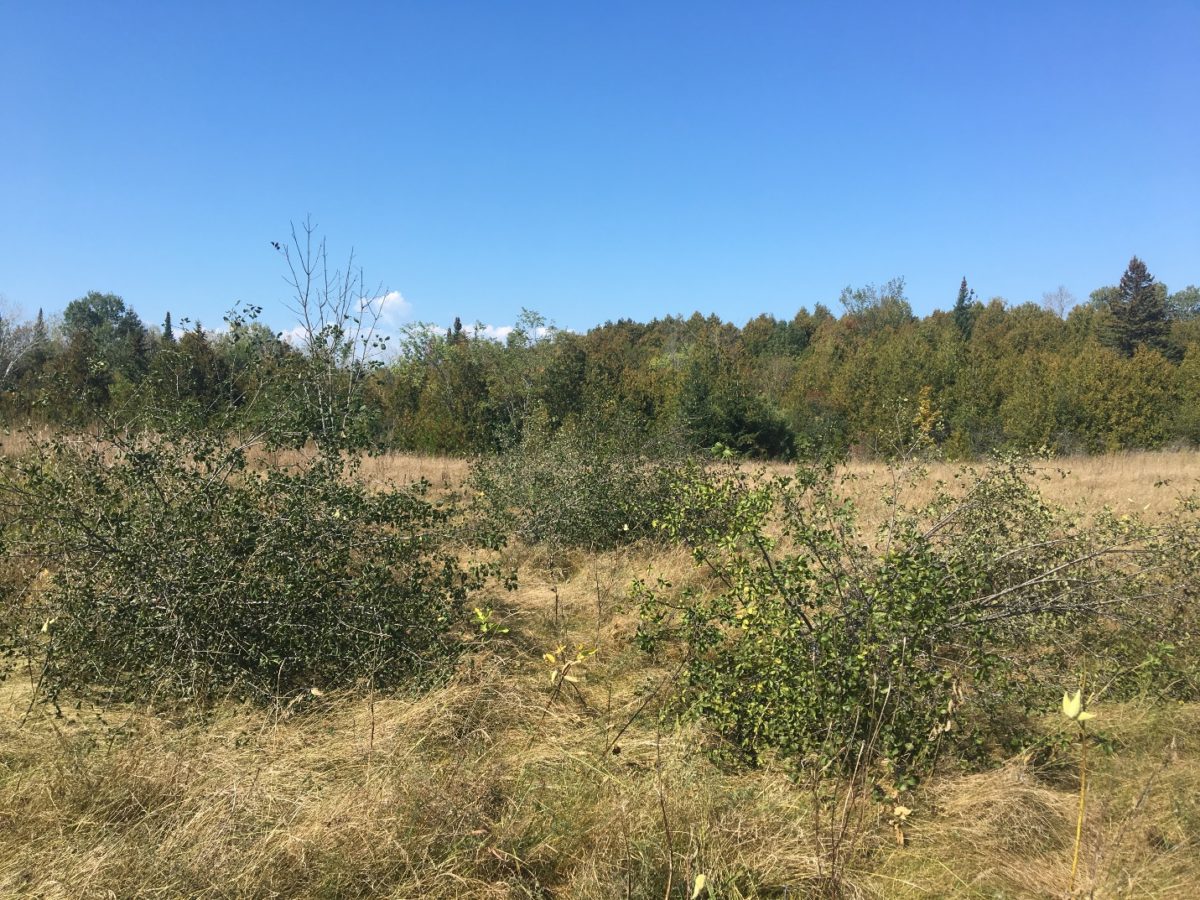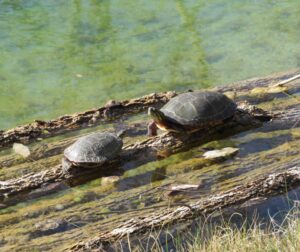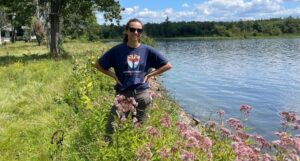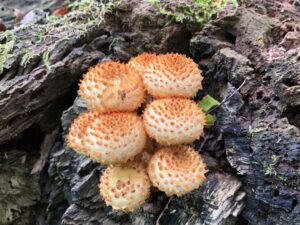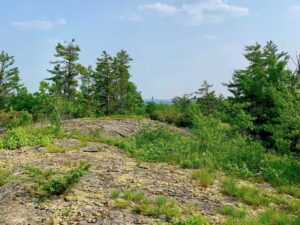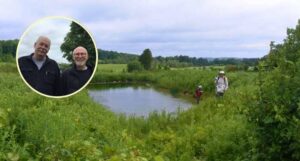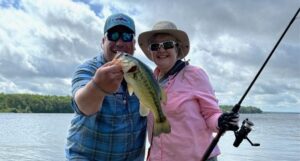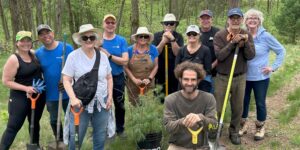Thorny Thieves: The fight against Invasive Buckthorn on KLT’s Dance Nature Sanctuary
By: Patricia Wilson, Volunteer
European or Common Buckthorn (Rhamnus cathartica) is a non-native invasive small tree species that was introduced into North America in the 1880s as an attractive shrub that was planted on people’s properties to be used as windbreaks or hedgerows along agricultural fields. Buckthorn trees have tiny black berries, oval leaves and have several thorns on its twigs.
Like most invasive plant species, Buckthorn is a resilient species that can occupy several types of habitat and thrive in a variety of soil types, temperatures and is tolerant to both sun and shade. Buckthorn has a rapid growth rate and can spread widely using seed dispersal through tree fruit and sprouting from cut or broken stems. Due to their longer fruiting periods than most native species they have the advantage of dispersing for a longer period of time than native plants!
One of the biggest reasons removing Buckthorn is important is because these tree species can decrease the biodiversity of an area. Buckthorn trees push native trees and shrubs out of habitats by crowding and shading other plants. Less diversity of plants means less real estate for small mammals, birds and insects to live in and less plants for wildlife to consume. The berries they produce are a laxative – meaning birds and other wildlife species get little to no nutritional value from these plants while also contributing to its dispersal. Non-native plants also have limited associations with native insects – meaning the branches aren’t crawling with this vital food source for birds. These species steal habitat for native species and threaten the biodiversity of any area they reside in – hence why I call them Thorny Thieves!
While the presence of Buckthorn on a property isn’t the end of the world, removing it can increase the biodiversity on a property. Every year KLT removes these threatening species on our protected properties so that habitat for native species is optimized for future years. I was fortunate enough to learn more about invasive species and to get the opportunity to work with two groups of volunteers over two stewardship days this spring and fall to help the fight the thorny thieves at KLT’s Dance Nature Sanctuary.
Our first stewardship expedition was during a very rainy day in May. There were six volunteers working to help cut down Buckthorn and plant native shrubs. We planted a variety of native shrubs -Grey Dogwood, Chokecherry, Nannyberry and Service Berry – all strong plants that provide food and refuge for several different species! Removing Buckthorn was a very challenging, yet rewarding experience. I definitely did not expect the amount of effort and work that went into removing these pesky trees, not to mention at some points painful (thanks to their sharp thorns!). Over the course of a few hours we managed to cut down several of the Buckthorn plants in the field and plant over 200 native species. It’s safe to say we got a little muddy!
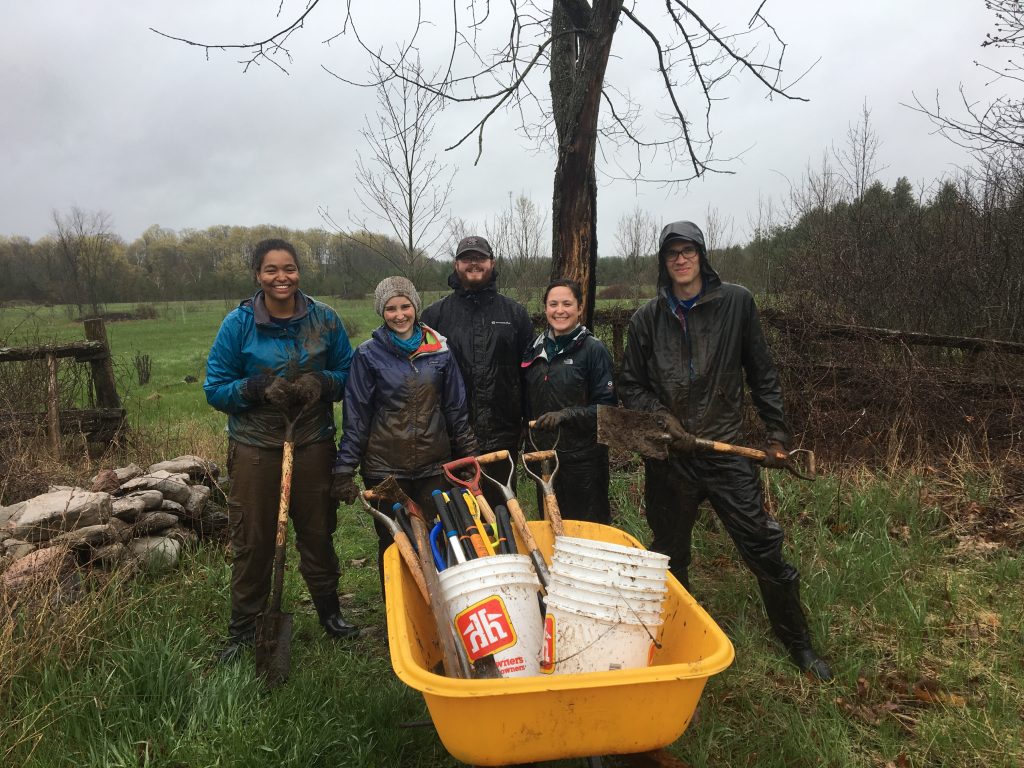
The second stewardship day was the complete opposite in terms of weather conditions – a high of 35 degrees and sunny skies! There were 6 volunteers and our task this time around was to cut down the Buckthorn trees right to their stumps and apply herbicide to the stump. This method is the most effective way of controlling the species. Due to the downpour on our first stewardship day we were unable to treat the stumps with pesticides but since it was a clear rain free day we were able to do it this time around.
Going into this project I was told that Buckthorn grow rapidly but I was not expecting that most of the Buckthorn trees had grown back since our last removal in May. They weren’t small either, some were almost 5 ft. tall!

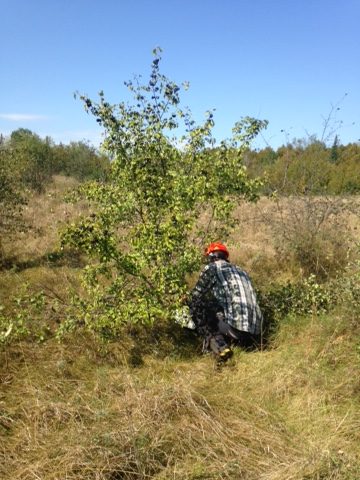
Despite these resilient plants growing back our method of cutting them to the stumps did help slow down the berry production which hopefully helped to delay the spread throughout the property. Even with this minor setback we were able to clear almost the entire field that we had worked on in May and a fair amount in another area of the property, successfully applying pesticides to each of the stumps. Fingers crossed that we were able to kill off most of the Buckthorn in order for new native species to thrive!

Volunteering with Kawartha Land Trust is a constant learning experience for me. Prior to these stewardship days I had only a general knowledge about invasive plants but over the span of 2 days I was able to learn more about invasives and why they are a threat to our environment; how to identify Buckthorn trees by leaf and branch physiology, and I gained experience in the management and removal of Buckthorn. Whenever I sign up for a volunteer day with the Kawartha Land Trust I always know, not only will it be a fun time but also a great learning experience for myself and the many other volunteers that work together in helping protect and preserve the land.
Special thanks to the Ministry of Natural Resources and Forestry, LSHRP grant, and the Ministry of the Environment and Climate Change EcoAction grant for making this project, and other habitat stewardship project possible for Kawartha Land Trust.
Posted October 18, 2017.

